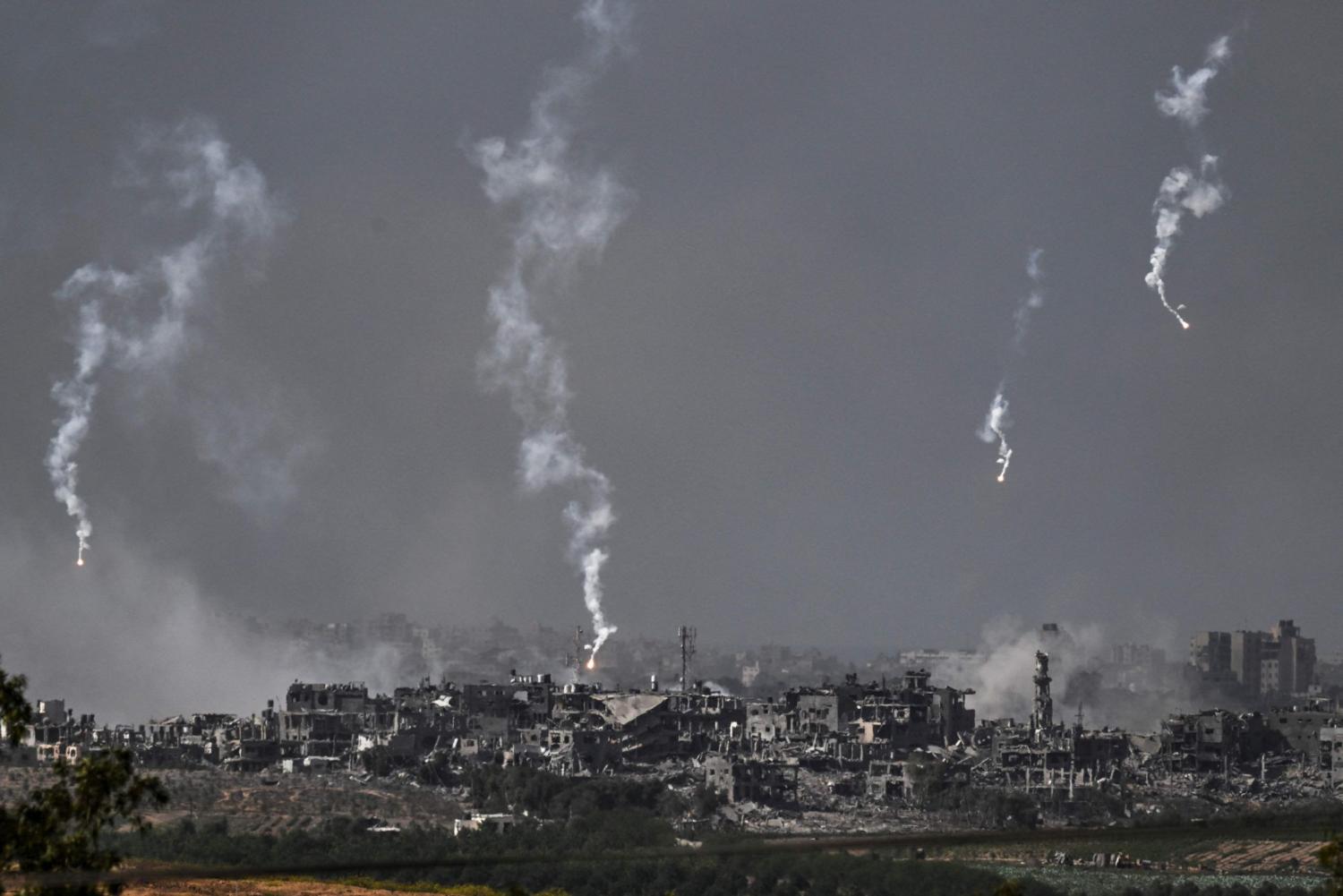
Israeli troops battled Hamas militants and attacked underground compounds on Tuesday with a focus on northern Gaza, from which an estimated 800,000 Palestinians have fled south despite continued Israeli bombardment across the besieged enclave.
Buoyed by the first successful rescue of a captive held by Hamas, Prime Minister Benjamin Netanyahu has rejected calls for a cease-fire and again vowed to crush Hamas’ ability to govern Gaza or threaten Israel following its bloody Oct. 7 rampage, which ignited the war.
More than half the territory’s 2.3 million Palestinians have fled their homes, with hundreds of thousands sheltering in packed U.N.-run schools-turned-shelters or in hospitals alongside thousands of wounded patients. Israeli strikes have hit closer to several northern hospitals in recent days, alarming medics.
The U.N. agency for Palestinian refugees, known as UNRWA, says nearly 672,000 Palestinians are sheltering in its schools and other facilities — four times their capacity. Thousands of people broke into its aid warehouses over the weekend to take food, as supplies of basic goods have dwindled because of the Israeli siege.
UNRWA head Philippe Lazzarini accused Israel of “collective punishment” of the Palestinians, and of forcing their displacement from northern Gaza to the south, where they are still not safe.
The agency, which hundreds of thousands of people in Gaza rely on for basic services even in normal times, says 64 of its staff have been killed since the start of the war, including a man killed alongside his wife and eight children in a strike late Monday.
“This is the highest number ever of U.N. aid workers killed in any conflict around the world in such a short time,” spokesperson Juliette Touma told The Associated Press. “UNRWA will never be the same without these colleagues.”
The military said it shot down a drone outside Israeli airspace on Tuesday near the Red Sea city of Eilat, without providing further details. Earlier this month, a U.S. Navy destroyer in the Red Sea intercepted three cruise missiles and several drones launched toward Israel by Iran-backed Houthi rebels in Yemen.
In the occupied West Bank, where Israeli-Palestinian violence has also surged, the army demolished the family home of Saleh al-Arouri, a senior Hamas official exiled over a decade ago. Ali Kaseeb, head of the local council in the village of Aroura, said the home had been vacant for 15 years.
Jonathan Conricus, an Israeli military spokesman, said ground operations in Gaza are focused on the north, including Gaza City, which he said was the “center of gravity of Hamas.”
“But we also continue to strike in other parts of Gaza. We are hunting their commanders, we are attacking their infrastructure, and whenever there is an important target that is related to Hamas, we strike it,” he said.
The military said it struck some 300 militant targets over the past day, including compounds inside tunnels, and that troops had engaged in several battles with Palestinian militants armed with antitank missiles and machine guns.
Hamas released its own video showing what it said was a battle in northern Gaza on Sunday. A fighter wearing a GoPro-style camera emerged from a tunnel with a rocket-propelled grenade launcher and ran across sand dunes and shrubs with other militants amid the clatter of gunfire.
It was not possible to independently confirm the reports.
Larger ground operations have been launched both north and east of Gaza City, which before the war was home to over 650,000 people.
Video footage released by the military showed soldiers walking across an open area as heavy gunfire echoes in the background and setting up a position in the ruins of a heavily damaged building.
Conricus said some 800,000 people have heeded the Israeli military’s orders to flee from the northern part of the strip to the south. But tens of thousands of people remain in and around Gaza City, and casualties are expected to mount on both sides as the battle moves into dense, residential neighborhoods.
The window to flee south may be closing, as Israeli forces reached Gaza’s main north-south highway this week. Video circulating Monday showed a tank opening fire on a car that had approached a sand berm but was turning around. Gaza’s Health Ministry said three people were killed.
Zaki Abdel-Hay, a Palestinian man living a few minutes’ walk from the road south of Gaza City, said people are afraid to use it. “People are very scared. The Israeli tanks are still close,” he said over the phone, adding that “constant artillery fire” could be heard near the road.
In a news conference late Monday, Netanyahu rejected calls for a cease-fire to facilitate the release of captives or end the war, which he has said will be long and difficult. “Calls for a cease-fire are calls for Israel to surrender to Hamas,” he told a news conference. “That will not happen.”
Netanyahu, who faces mounting anger over Israel’s failure to prevent the worst surprise attack on the country in a half century, also said he had no plans to resign.







